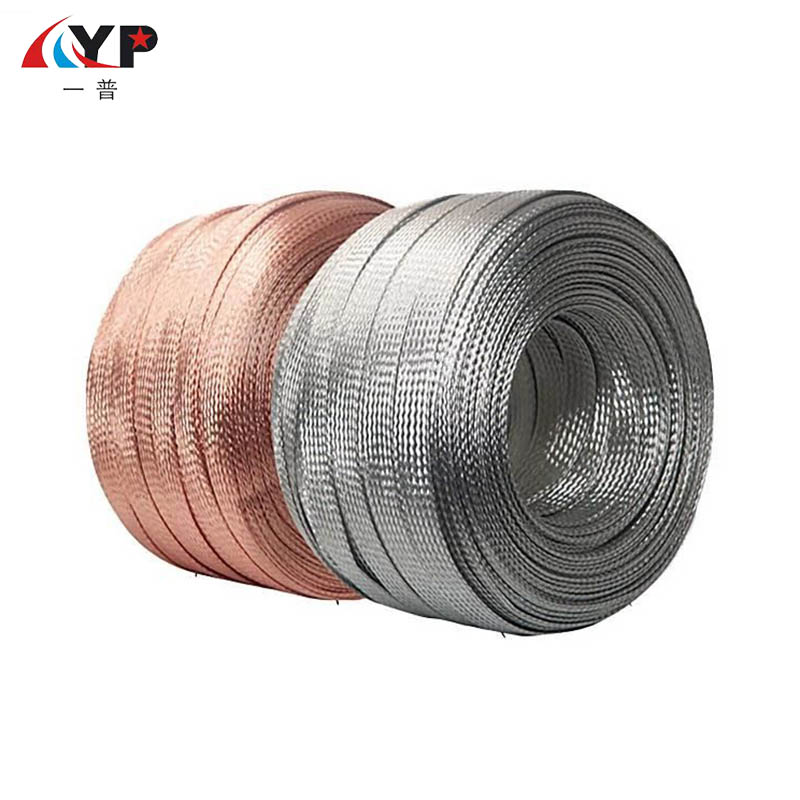Why Are Copper Stranded Wires the Preferred Choice for Electrical Wiring in Modern Applications?
2025-02-22
When it comes to electrical wiring, the material used plays a crucial role in ensuring safety, performance, and durability. Among the various materials available, copper has long been the preferred choice for electrical conductors due to its excellent conductivity, corrosion resistance, and overall reliability. But within the category of copper wiring, copper stranded wires stand out as an even more versatile option. Why exactly are copper stranded wires so widely used, and what advantages do they offer over solid copper wires in modern electrical systems?
Copper stranded wires consist of multiple thin strands of copper that are twisted or braided together to form a single conductor. This construction provides several benefits, making them a popular choice for a wide range of applications, from household wiring to industrial use. In this blog, we will explore why copper stranded wires are the go-to option for many electrical systems and how they compare to solid copper wires in terms of performance and practicality.
What Are Copper Stranded Wires?
Copper stranded wires are composed of several small copper strands that are twisted or braided together to form one wire. These wires are typically coated with an insulating material, such as PVC or Teflon, to protect against electrical faults and ensure safe operation. The main feature that differentiates stranded wires from solid wires is their construction—while solid copper wires are made from a single continuous strand of copper, stranded wires are made from multiple smaller strands. This construction offers flexibility and durability, making stranded wires ideal for many demanding electrical applications.
Why Are Copper Stranded Wires Preferred Over Solid Copper Wires?
1. Enhanced Flexibility
One of the biggest advantages of copper stranded wires is their flexibility. Since they consist of multiple smaller strands, they can bend, twist, and maneuver much more easily than solid copper wires. This makes them ideal for applications where the wire needs to be routed through tight spaces, around corners, or where there is a need for frequent movement or vibration. For example, copper stranded wires are commonly used in automotive wiring, portable equipment, and power cords where flexibility is essential.
2. Better Durability Under Stress
Copper stranded wires are more durable than their solid counterparts when it comes to mechanical stress. Solid wires can be prone to breaking or cracking when bent repeatedly, especially in environments where the wiring undergoes frequent movement or flexing. Stranded wires, however, can withstand bending and twisting without compromising their integrity, making them a more reliable choice in high-stress environments. This is especially important in applications like robotics, construction machinery, and machinery with moving parts.
3. Improved Conductivity
Copper is renowned for its excellent electrical conductivity, and this property is equally beneficial in stranded wires. While solid copper wires may have a slightly higher conductivity due to the continuous metal path, stranded copper wires still offer efficient electrical transmission because of the high-quality copper strands used. In many cases, the slight reduction in conductivity is negligible compared to the flexibility and durability benefits that stranded wires provide.
4. Resistance to Fatigue
One of the most notable features of stranded wires is their ability to resist fatigue from continuous flexing. When wires are exposed to constant movement, such as in heavy machinery, equipment, or vehicles, solid wires can develop internal breaks or cracks due to the stress of bending. Stranded copper wires, on the other hand, distribute the stress across multiple strands, significantly reducing the risk of breakage or failure. This makes them a much more reliable choice for applications that involve movement or vibration.
5. Ease of Installation
Because of their flexibility and resilience, copper stranded wires are often easier to install than solid copper wires, especially in complex wiring systems. They are more forgiving when being routed through walls, ceilings, or enclosures, and they are less likely to break during installation. This ease of installation can save time and labor costs, making copper stranded wires a preferred choice for electricians and contractors working on large projects.
6. Higher Resistance to Corrosion
Copper naturally resists corrosion, and when used in stranded wire construction, this resistance is maintained. The multiple strands of copper help reduce the risk of corrosion in exposed areas by allowing more surface area for protection and less exposure to environmental factors. While both solid and stranded copper wires offer resistance to oxidation, stranded wires, due to their construction, may be less prone to damage in environments where the wires are subjected to harsh conditions.
7. Cost-Effectiveness for Specific Applications
In many applications, the cost-effectiveness of copper stranded wires is another reason they are favored. While solid copper wires may be cheaper per meter in some cases, stranded wires offer superior performance for applications where flexibility, durability, and resistance to mechanical stress are crucial. Additionally, their ability to handle movement without degrading means they may require fewer replacements and repairs over time, making them more cost-effective in the long run.
Where Are Copper Stranded Wires Used?
Copper stranded wires are used in a wide variety of applications across various industries, including:
- Residential and Commercial Electrical Systems: Stranded copper wires are ideal for electrical installations where flexibility is required, such as in circuits, power distribution, and wiring that needs to bend around corners or through tight spaces.
- Automotive and Marine Wiring: The automotive and marine industries frequently use copper stranded wires for their flexibility and ability to withstand vibrations, especially in areas subject to motion and movement.
- Industrial Equipment: Copper stranded wires are used in manufacturing and industrial applications that involve heavy machinery and equipment that requires durable, flexible wiring for operation.
- Consumer Electronics: Many consumer electronics, such as headphones, chargers, and appliances, use copper stranded wires because of their ability to transmit electrical signals effectively while being flexible enough to move and bend without damage.
- Solar and Renewable Energy Systems: Copper stranded wires are also popular in solar panel systems and renewable energy applications, where they are used to connect solar panels, batteries, and other components.
Are There Any Drawbacks to Copper Stranded Wires?
While copper stranded wires have many benefits, they do have a few potential downsides to consider:
1. Higher Initial Cost
Copper stranded wires can be more expensive than solid copper wires, primarily because of the additional labor and materials required to produce the multiple strands. However, as mentioned earlier, the increased durability, flexibility, and reliability often make the higher initial cost worthwhile in the long term.
2. More Complex to Strip and Solder
Stripping and soldering copper stranded wires can be slightly more challenging than solid wires because the individual strands can fray and become difficult to handle. Special care must be taken during installation to avoid damaging the wires during these processes.
3. Larger Physical Size
Due to the multiple strands of copper, stranded wires can be physically larger than their solid counterparts for the same gauge. This might make them less suitable for some applications where space is limited.
Conclusion
Copper stranded wires are a fantastic option for a wide range of electrical applications, offering flexibility, durability, reliability, and efficiency that solid copper wires cannot always match. From residential wiring to industrial machinery, these wires are the preferred choice for those who need reliable and long-lasting electrical conductors in environments subject to movement, vibration, or mechanical stress. While they may come at a higher initial cost, the long-term benefits and cost savings make them an investment worth considering for your next project.



